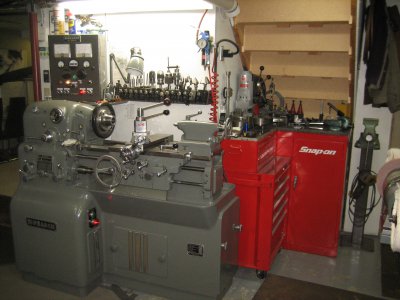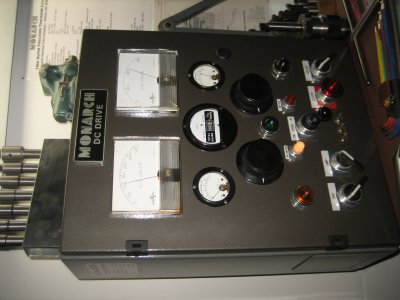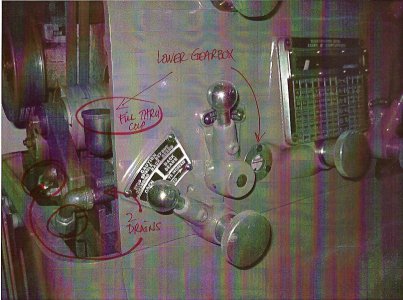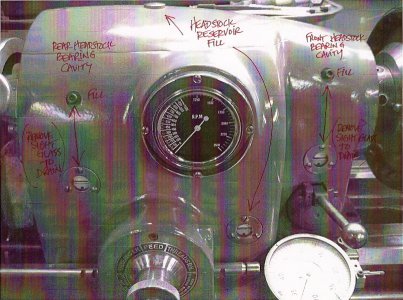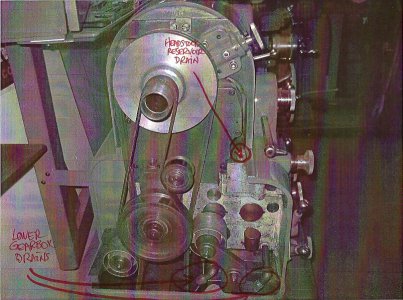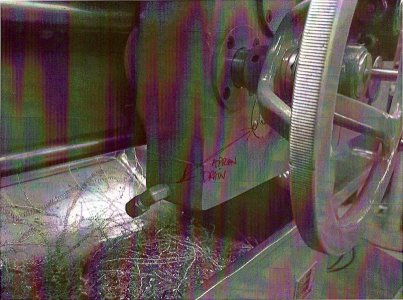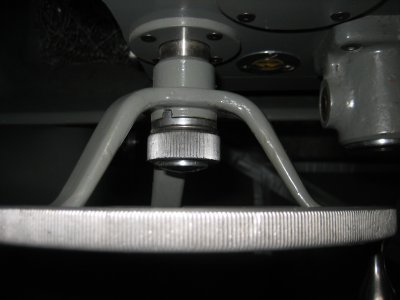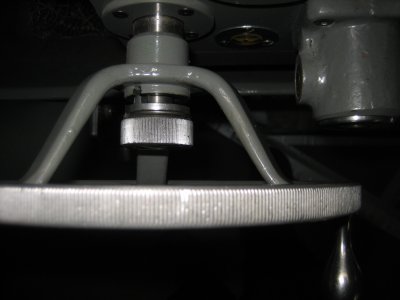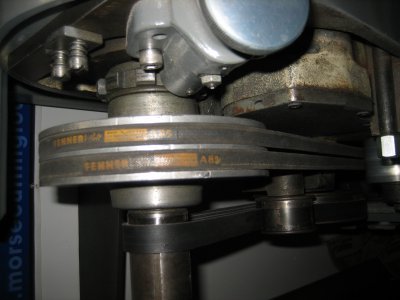- Joined
- Mar 26, 2013
- Messages
- 29
Hi all,
New member here. I'm Cecil, live in East Tennessee. I just recieved as a gift a Monarch 10EE S.N. 38019 built in 1953. It is now in my shop and ready to be cleaned up, drained, refilled, lubed and powered up.
Background:
The Monarch is a base model.. which means that it did not come with thread cutting or taper attachment. It has the original 3 jaw chuck, a bison 4 jaw, what appears to be a 2J collet nose (no drawbar or closer), and a phase II Aloris wedge type size C block with 4 tool holders. Although there is no leadscrew and no gearing to support threading there is a feed rod and the apron and crossfeed auto feeds work fine. I have operated the machine and there seem to be no issues as to operability.....Yet.
Now that it is mine I do not intend to operate it until I have thoroughly cleaned and lubricated it.
I have purchased the manual for the machine and now know all the lube points, reservoirs and oil types. I would guess that the lubricants have not been changed in at least 15 years if not longer. Fortunately it has been used lightly for those last 15 years.
I was pleasantly surprised to find that although it was made in 1953 it is pure reliance Motor-Generator drive....NO TUBES!!!!.
It has a 4.6 hp 3450 rpm 3phase motor wired 240 driving a 2.5 KW 230 volt DC 3450 rpm generator with belt driven 115 volt DC piggy-back exciter
The generator drives a 3 hp variable speed 230 volt DC main drive motor.
There is a 1/4 hp 240 V 3 phase coolant pump circulating from coolant nozzle to chip tray to sump and back to nozzle. I will not power this motor up any time soon because the sump is LOADED with a huge wad of rust bonded swarf. The pump might not be usable.
The Main Drive Motor speed is controlled by two linked rheostats. One controlls the generator field current which results in controlling the generator output voltage which is supplied to the main drive motor. The second rheostat controls the motor field current. By linking the two rheostats the main drive motor is supplied with high field current for low speed operation and lower field current for higher speed operation.
Now the questions:
Since I have no 3 phase power I will obviously need to either buy a static converter or a VFD or go directly to 240 volt DC motor control and eliminate the Motor Generator entirely.
It would seem that I would need at least 7 or 8 HP in a static converter due to 33% loss and hard start. Or I could probably get by with a 4 or 5 hp VFD since it could spin the 3 phase motor up slowly and avoid the hard start.
The other option of maybe 4 hp DC motor controller is a little more hazy due to the way the reliance drive controls both Armature voltage and field voltage for maximum torque at speed.
Any ideas or recommendations from those who have been there and done it... or just have an opinion.
Thanks,
Cecil
New member here. I'm Cecil, live in East Tennessee. I just recieved as a gift a Monarch 10EE S.N. 38019 built in 1953. It is now in my shop and ready to be cleaned up, drained, refilled, lubed and powered up.
Background:
The Monarch is a base model.. which means that it did not come with thread cutting or taper attachment. It has the original 3 jaw chuck, a bison 4 jaw, what appears to be a 2J collet nose (no drawbar or closer), and a phase II Aloris wedge type size C block with 4 tool holders. Although there is no leadscrew and no gearing to support threading there is a feed rod and the apron and crossfeed auto feeds work fine. I have operated the machine and there seem to be no issues as to operability.....Yet.
Now that it is mine I do not intend to operate it until I have thoroughly cleaned and lubricated it.
I have purchased the manual for the machine and now know all the lube points, reservoirs and oil types. I would guess that the lubricants have not been changed in at least 15 years if not longer. Fortunately it has been used lightly for those last 15 years.
I was pleasantly surprised to find that although it was made in 1953 it is pure reliance Motor-Generator drive....NO TUBES!!!!.
It has a 4.6 hp 3450 rpm 3phase motor wired 240 driving a 2.5 KW 230 volt DC 3450 rpm generator with belt driven 115 volt DC piggy-back exciter
The generator drives a 3 hp variable speed 230 volt DC main drive motor.
There is a 1/4 hp 240 V 3 phase coolant pump circulating from coolant nozzle to chip tray to sump and back to nozzle. I will not power this motor up any time soon because the sump is LOADED with a huge wad of rust bonded swarf. The pump might not be usable.
The Main Drive Motor speed is controlled by two linked rheostats. One controlls the generator field current which results in controlling the generator output voltage which is supplied to the main drive motor. The second rheostat controls the motor field current. By linking the two rheostats the main drive motor is supplied with high field current for low speed operation and lower field current for higher speed operation.
Now the questions:
Since I have no 3 phase power I will obviously need to either buy a static converter or a VFD or go directly to 240 volt DC motor control and eliminate the Motor Generator entirely.
It would seem that I would need at least 7 or 8 HP in a static converter due to 33% loss and hard start. Or I could probably get by with a 4 or 5 hp VFD since it could spin the 3 phase motor up slowly and avoid the hard start.
The other option of maybe 4 hp DC motor controller is a little more hazy due to the way the reliance drive controls both Armature voltage and field voltage for maximum torque at speed.
Any ideas or recommendations from those who have been there and done it... or just have an opinion.
Thanks,
Cecil

